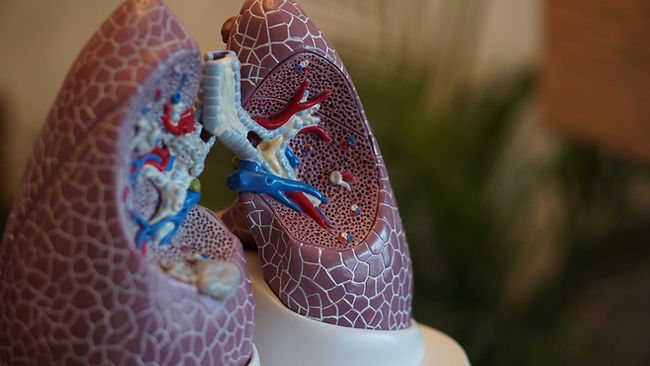
Fibrotic Disease
Fibrosis is akin to scarring, since both involve deposition of connective tissue (i.e. collagen and glycosaminoglycans) by fibroblasts activated by immune cells such as macrophages. However, if tissue injury is severe or repetitive, deregulation of the healing response may lead to fibrosis.
Fibrosis interferes with the normal function of an organ; it may occur in many tissues, usually as a result of inflammation or damage. Some of the organs affected are the lungs (pulmonary fibrosis), the liver (chronic liver disease, cirrhosis), the kidneys (renal fibrosis), the heart (heart fibrosis), the brain (glial scar), the joints (arthrofibrosis), the intestine (Crohn’s disease), and the skin (scleroderma/systemic fibrosis, nephrogenic systemic fibrosis).
-
Liver fibrosis
-
Kidney fibrosis
-
Pulmonary fibrosis
-
Cardiac fibrosis
-
Skin fibrosis
-
Systemic sclerosis

SULFAGENIX FOCUS:
Non-alcoholic fatty liver disease (NAFLD) is rather common in older adults, being detected in about 25% of the population. However, a recent study (called “Children of the 90s”) revealed that a substantial number of UK young adults are also affected. Researchers tested over 4,000 young people in this study, which follows up on the lives and health of individuals born in 1991 and 1992 in Avon, England.
All participants were examined with ultrasound at the age of 18, revealing that 2.5% had NAFLD. Five years later, a fibroscan (transient elastography scan) showed that over 20% had NAFLD, with half of them suffering from severe disease. The scans also revealed that 2.4% had liver fibrosis; importantly, severe liver fibrosis can lead to cirrhosis. The majority of the young people with NAFLD were overweight, with a BMI (body mass index) over 25; among those with the largest amount of fatty liver deposits, 60% were obese.
Renal fibrosis, including glomerular sclerosis and tubulointerstitial fibrosis, is the hallmark of progressive renal disease of different origins and usually leads to chronic kidney disease (CKD) and kidney failure. CKD is the 16th leading cause of death worldwide affecting 8% to 16% of the world population. About one in ten people present with CKD worldwide; it caused 956,000 deaths globally in 2013, up from 409,000 deaths in 1990.
Pulmonary fibrosis is a chronic and progressive interstitial lung disease; it is triggered by various factors such as infections, environmental pollution and certain medications: however, idiopathic pulmonary fibrosis (IPF), without known cause, is most common. About 70% of diagnosed cases are in males.
There is presently no cure for pulmonary fibrosis; life expectancy is only three to five years and at least 5 million people are affected globally. Treatment is directed toward improvement of symptoms and certain medications may be used to try to slow the scarring. Lung transplantation is generally the last resort for IPF patients.
Cardiac fibrosis is a pathological process initiated by some harmful stimuli, such as myocardial injury (myocardial infarction) and/or inflammation, and followed by proliferation and migration of cardiac fibroblasts and myofibroblast transdifferentiation. This process then causes excessive deposition of extracellular matrix (collagen and glycosaminoglycans) and abnormalities in cardiac structure and function including hypertrophy, failure and arrythmias (Zhang 2015).
Numerous studies have demonstrated that endogenous and exogenous hydrogen sulfide play a critical role in the development of fibrosis in lung, liver, kidney and heart (Zhang 2015). The H2S-producing enzymes CBS and CSE are responsible for maintaining adequate levels of H2S in the blood and tissues of mammals.
The deficiency of endogenous CBS/H2S or CSE/H2S systems causes fibrosis: downregulation of CBS and CSE expression/activity and decreased plasma H2S levels are observed in patients with hepatocirrhosis. Using animal models of various organ fibrosis, several researchers have shown a significant decrease of the endogenous H2S level in plasma and tissues, whereas administration of exogenous H2S was shown to inhibit fibrosis development (Zhang 2015, Lin 2018, Sun 2019).
